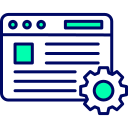Design Psychology Behind Magnetic CTAs
People choose faster when benefits are specific and concrete. Replace vague prompts with precise outcomes, like “Download the free Figma kit” instead of “Get started.” Share your favorite before-and-after CTA rewrites in the comments.
Design Psychology Behind Magnetic CTAs
Deadlines work when they respect users. Use time cues tied to real events—“Enroll before the cohort kickoff”—not artificial countdowns. Have you tried gentle urgency? Tell us what wording felt motivating, not manipulative.
Design Psychology Behind Magnetic CTAs
People act when they see a tribe they admire. Pair CTAs with relevant proof: “Join 7,200 designers improving portfolio conversion.” What community signals would reassure your audience today? Share your ideas to inspire others.




